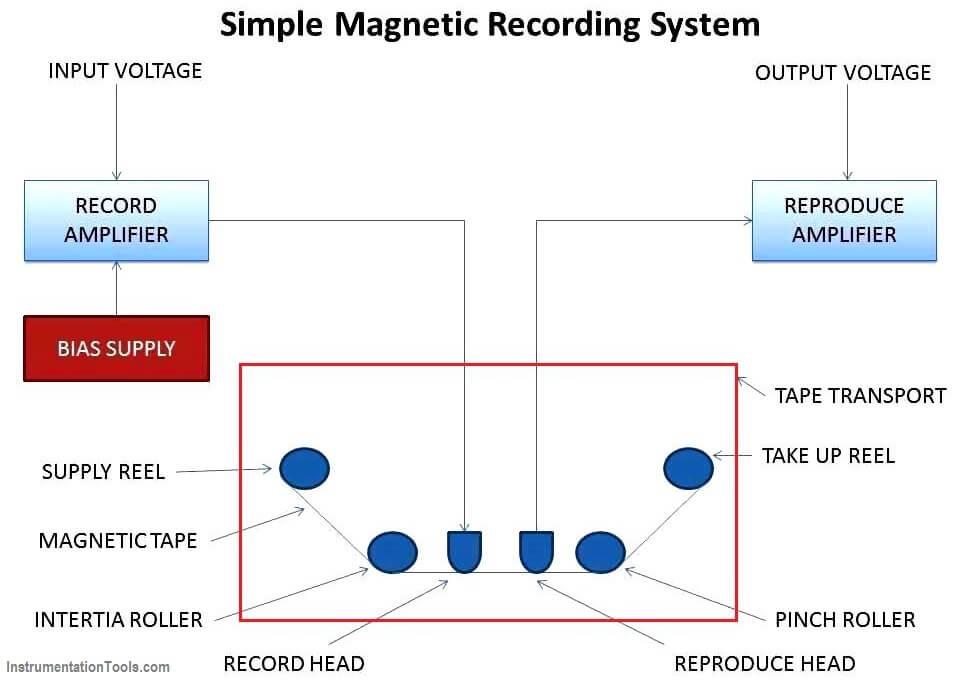A recorder is used to produce a permanent record of the signal that is measured.
A record is used to analyse how one variable varies with respect to another and how the signal series with time.
The objective of a recording system is to record and preserve information pertaining to measurement at a particular time and also to get an idea of the performance of the unit and to provide the results of the steps taken by the operator.
The basic components of a general recorder are an operating mechanism to position the pen or writer on the paper and a paper mechanism for paper movement and a printing mechanism.
Okay, now you know what is a recorder, why it is used and where it is used. Now I will explain about magnetic tape recorder.
A magnetic tape recorder is used to record data which can be retrieved and reproduced in electrical form again. This recorder can record signals of high frequency.
The magnetic tape is made of a thin sheet of tough plastic material; one side of it is coated with a magnetic material (iron oxide). The plastic base is usually polyvinyl chloride (PVC) or polyethylene terephthalate. Recording head, reproducing head and tape transport mechanism are also present.

Learn the example of flip-flop PLC program for lamps application using the ladder logic to…
In this article, you will learn the STAR DELTA programming using PLC controller to start…
Lube oil consoles of rotary equipment packages in industrial process plants are usually equipped with…
Rotating equipment packages such as pumps, compressors, turbines need the lube oil consoles for their…
This article explains how to blink lights in ladder logic with a detailed explanation video…
In this article, a simple example will teach you the conversion from Boolean algebra to…